Primary Sources
Primary Sources
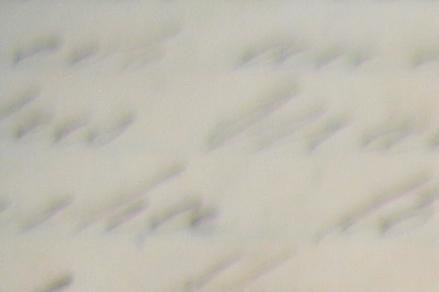
Teachers, need a primary source to create a lesson in the classroom? Students, need a source for a research project?
Here, we've listed the primary sources featured in our Unit Plans. Click on a primary source to go to its page, where you may find additional images, transcriptions of the text, a citation guide for including the source in a bibliography, or ways to purchase copies of the source for the classroom.
HSP's collections are not limited to the primary sources listed here. To see all that HSP has to offer, come visit us or explore our collection online through the Digitial Library and the Discover online catalog.
Some sources have handwriting that is difficult to read. If you need help decoding handwriting, check out this guide from Ancestry.
 This flyer from 1968 invites its reader to hear Reverand Andrew J. Young speak about the meaning of social action at Mother Bethel A.M.E. Church. |
 This 1966 CORE/SNCC flyer informs readers of an upcoming meeting entitled "Down South - Up South." It presents the time and place of the meeting as well as a number of prominent guests scheduled to attend. To see additional flyers, click the "View or Buy" button at the right. Then use the "Zoom/more media" button on that page. |
 As a response to the beatings of school children who requested better conditions in their schools, this flyer instructs blacks to withhold their money from the school district until Police Commissioner Rizzo is fired. The flyer is from the Thelma McDaniel Collection and is not dated. |
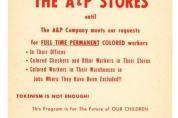 This flyer instructs blacks to boycott A & P stores until the stores employ "colored" people. It is from the Thelma McDaniel Collection and dated between 1966-1971. |
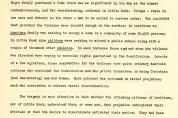 Loren Miller, a specialist in housing discrimination, presented this speech to the National Committee Against Discrimination in Housing on December 12, 1958. In his speech, Miller cited the discriminatory occurences in Levittown and Little Rock to advocate against residential segregation. |
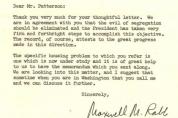 This collection contains the correspondence of Henry Patterson with numerous members of the President's Committee on Government Contracts as he attempts to attain fair treatment for blacks in America. Dates for the documents span from 1953 to 1958. To view all correspondence, click "view or buy" button to right. Then use the "Zoom/more media" button. |
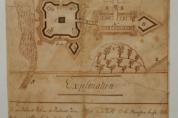 This map of Fort Duquesne (year unknown) contains a key which helps explain daily life at the fort and shows where important events took place. |
 This is a plan fort No. 37, Fort Dusquesne, which the French established along the Alleghany river in 1754. |
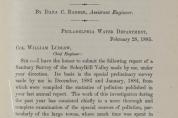 This Report of a Sanitary Survey of the Schuylkill Valley was written by Dana C. Barber for the Philadelphia Water Department in 1884. It details the pollution to the water supply for six districts along the Schuylkill River. The last page also includes a summary chart of its findings. To see the entire report, click on the "View or Buy" button. |
 This speech was delivered by William Ludlow on March 30, 1885. The ten page speech contains his argument for a more sanitary public water supply in and around Philadelphia. To see the whole report, click on the "View or Buy" button. |
 This is a four page report to the members of the Pythian Base Ball Club recounting the events of the Philadelphia Convention on October 16, 1867. The report is dated December 18, 1867. It is part of the Leon Gardiner Collection of American Negro Historical Society records. |
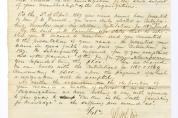 This letter, dated March 1, 1869, is from the Leon Gardiner collection for American Negro Historical Society records. It is a correspondence between Jacob C. White and William Still regarding the Pythian Baseball Club. |
- ‹ previous
- 20 of 22
- next ›
